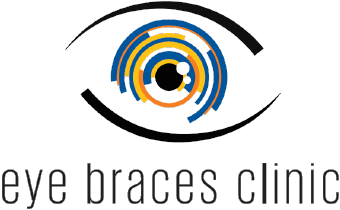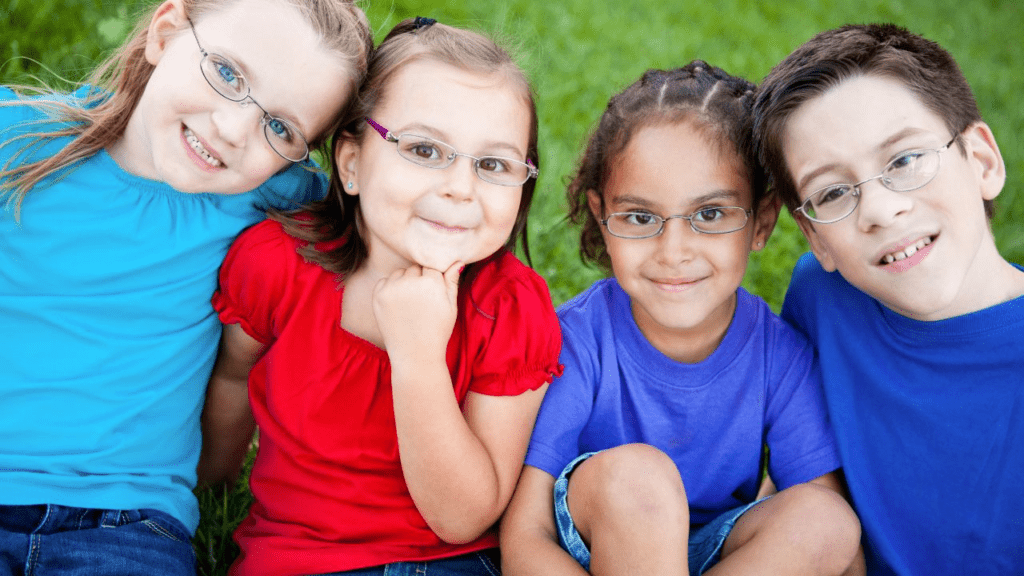Myopia or nearsightedness is on the rise. According to the International Myopia Institute, 30% of the world is currently myopic. The number is expected to reach 50% or 5 billion people by 2050.
This rise is also evident in Singapore, where an estimated 74% of 15- to 19-year-olds have degenerative myopia.
For comparison, the rate of myopia in the same age group among our Australian neighbours is only 30%.
More alarming is the myopia progression among children, where 10% of 6-year-olds and below in the country are myopic.
Fortunately, there are many options for addressing myopia in children . Read on below to know more.
What Is Myopia?
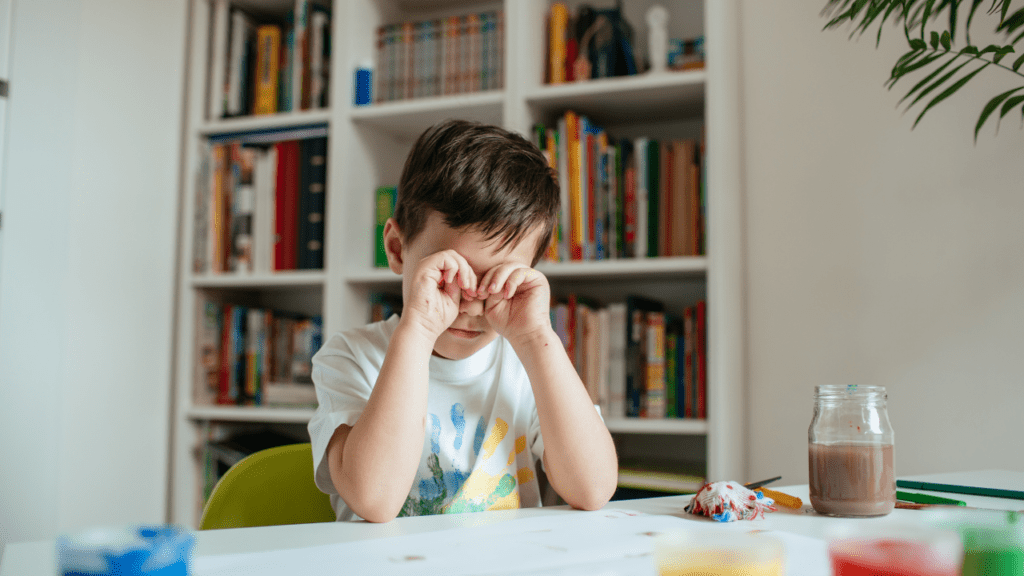
Myopia is a condition in which you can see close items well but distant objects hazy. It happens when the eye’s longer-than-normal eyeball causes light to be refracted improperly inside the eye.
Instead of the image focusing directly on the retina, it focuses in front of it, causing what is known as a ‘refractive error.’
How Do Children Develop Myopia Compared to Adults?
Childhood myopia is usually inherited while myopia in adults is often a result of serious health issues such as diabetes.
The risk of developing myopia in adults also increases with activities that demand intense visual focus or close-up work.
Causes of Myopia Progression in Children

Myopia in children can either develop slowly or quickly depending on several factors.
Genetics
Since the condition is hereditary, having a family history of myopia will put your child at a higher risk of developing myopia.
Excessive Close-Up Work
Activities that require intense, up-close vision use the center of the eye heavily and defocus the peripheral vision. This can lead to myopia if done repeatedly and for prolonged periods.
To ease the eye strain, fatigue, and dryness from this excessive close-up work, remind your child to take a break to gaze at faraway objects after 30 to 40 minutes.
Insufficient Time Outdoors
Exposing children to natural light can prevent or delay the development of myopia.
In reference to the large disparity in myopia rates between Australia and Singapore, on average, Australian children spend about 7 hours more time outside each week than Singaporean children do.
Can Myopia Be Reversed in Childhood?
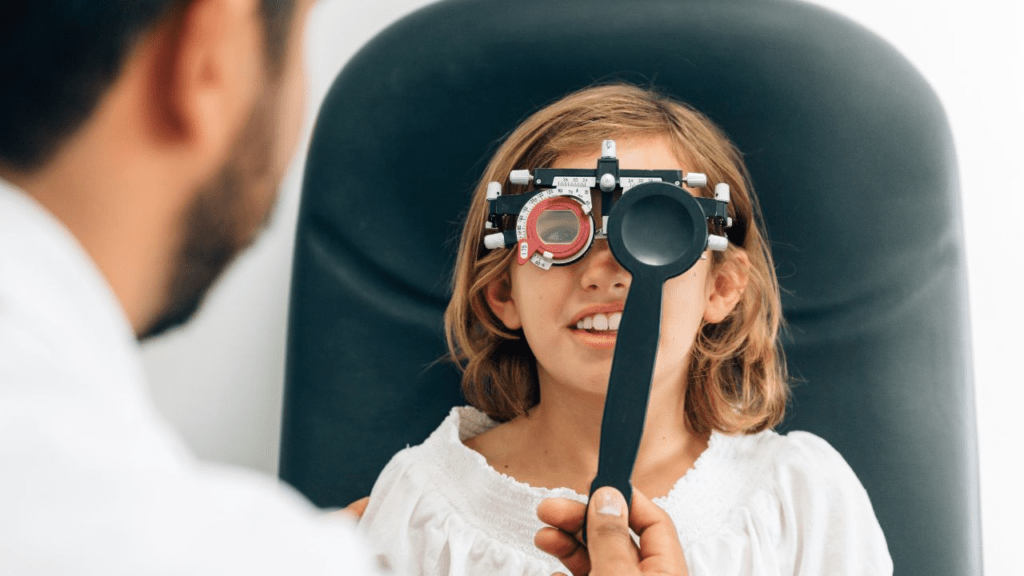
No, myopia cannot be fixed or reversed, but it can be managed through regular eye exams, especially if there is a family history of it, and a range of visual aids and lifestyle changes.
How to Slow Down Myopia in Children
When addressing myopia in children, the primary goal is to detect problems early and prevent these from progressing.
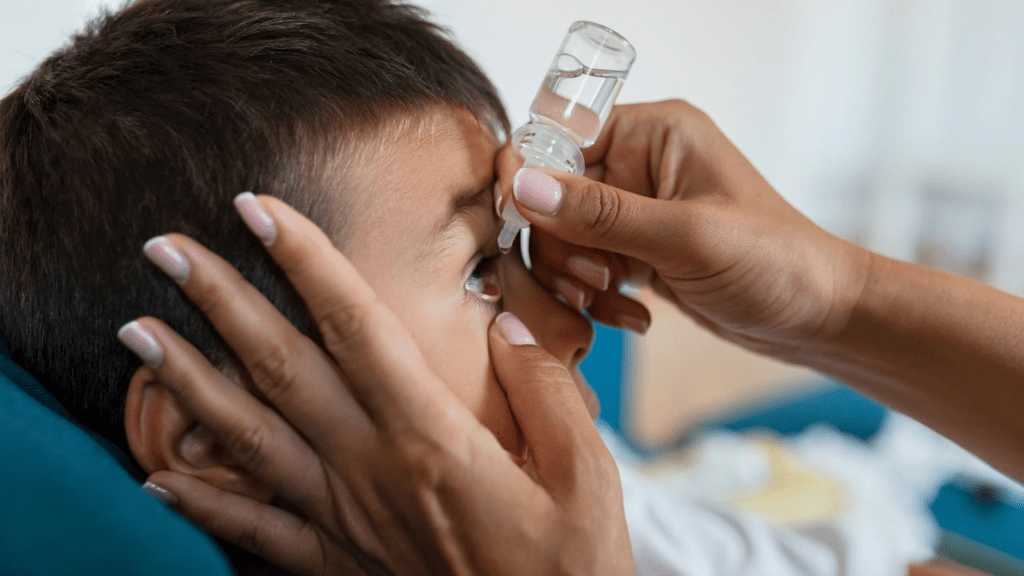
Low Dose Atropine Eye Drops
Atropine eye drops at 0.01% can slow down the rate of progressing myopia. The low dose is crucial to prevent side effects such as pupil dilation, light sensitivity, and blurred vision at close distances.
This medication is typically used daily for over 2 years until myopia has stabilised.
Lifestyle Changes

Sight-saving tips
Balancing your child’s screen time with outdoor activity when it’s possible and scheduling regular eye exams can safeguard their eyesight and slow the progression of myopia.
Eye-healthy foods
Consuming a lot of leafy greens, fruits, and seafood high in omega-3 fatty acids, such as tuna and salmon, can slow down degenerative myopia.
Refractive Surgery as Treatment for Myopia
Refractive surgeries are safe procedures that produce quick, irreversible results.
They carry risks like most surgical procedures, require pre and post-op care, and candidates looking to undergo them must meet certain requirements.
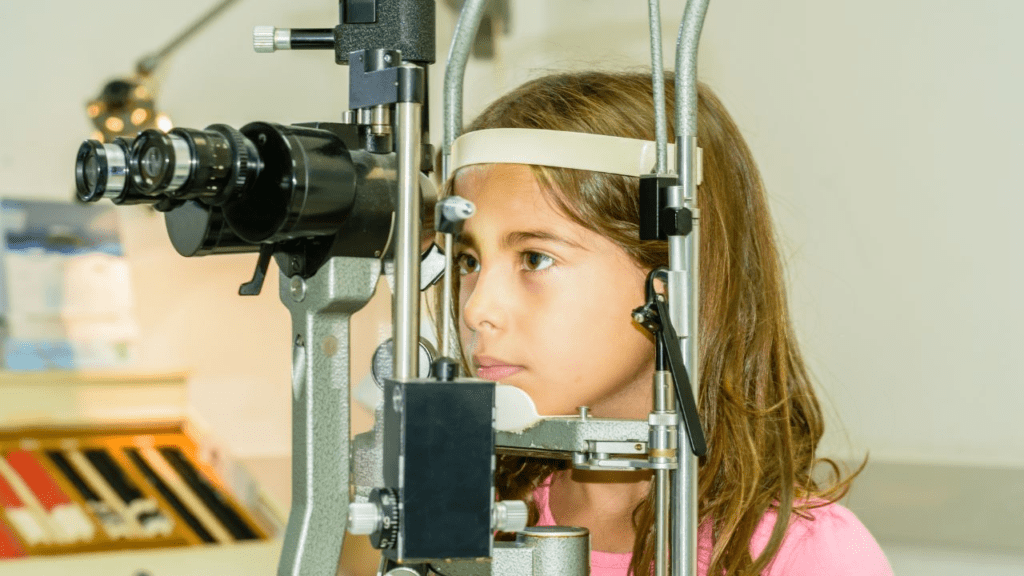
Laser-Assisted in Situ Keratomileusis (LASIK)
A form of corrective refractive eye surgery, LASIK uses a laser to create a corneal flap and replace it.
This reshapes the corneas permanently, allowing light entering the eye to focus properly on the retina. The result is vision correction for the majority of cases.
However, given how delicate the cornea is, corneal complications may happen.
Thus, your child may experience everything from long-term eye dryness, under or over-correction that may only be corrected by additional surgery, and even partial or total vision loss.
Laser-Assisted Sub-Epithelial Keratectomy (LASEK)
Similar to LASIK, LASEK works by reshaping the cornea using a laser, but instead of creating and replacing a corneal flap, it loosens, moves, and reattaches it.
LASEK carries the same risks as LASIK since both are corneal reshaping procedures.
However, the visual recovery time for the surgery is longer, usually taking up to 2 weeks to LASIK’s 24 hours or so. The procedure also causes more pain and discomfort in general.
On top of that, your child may also need to wear a bandage contact lens for 3-4 days and use topical steroid drops for several weeks longer.
Aside from being surgically invasive with a painful recovery rife with complications, children are simply not suited for refractive surgery like LASIK or LASEK.
This is because refractive surgery is usually recommended only when eyesight has stabilised, usually in late teenhood or early adulthood. When done on eyesight that has not yet stabilised, there is a high possibility that the myopia will return.
Photorefractive Keratectomy (PRK)
PRK is another cornea reshaping surgery similar to LASEK and LASIK.
But unlike the two procedures, PRK does not create a flap. Instead, it completely removes the epithelium to access the cornea, and then the epithelium grows back.
This makes it a good option for those with very thin corneal tissue and dry eyes since the flap method sometimes worsens dry eye symptoms.
The downside of PRK is how uncomfortable and painful it is—an essential consideration since young children are more sensitive to pain than adults.
It also has a longer recovery time, sometimes taking up to three months before the epithelium heals and for vision to stabilise.
Myopia Correction through Prescription Lenses
Prescription lenses are at the heart of your child’s eyeglasses and contacts, allowing them to have sharp and clear vision.
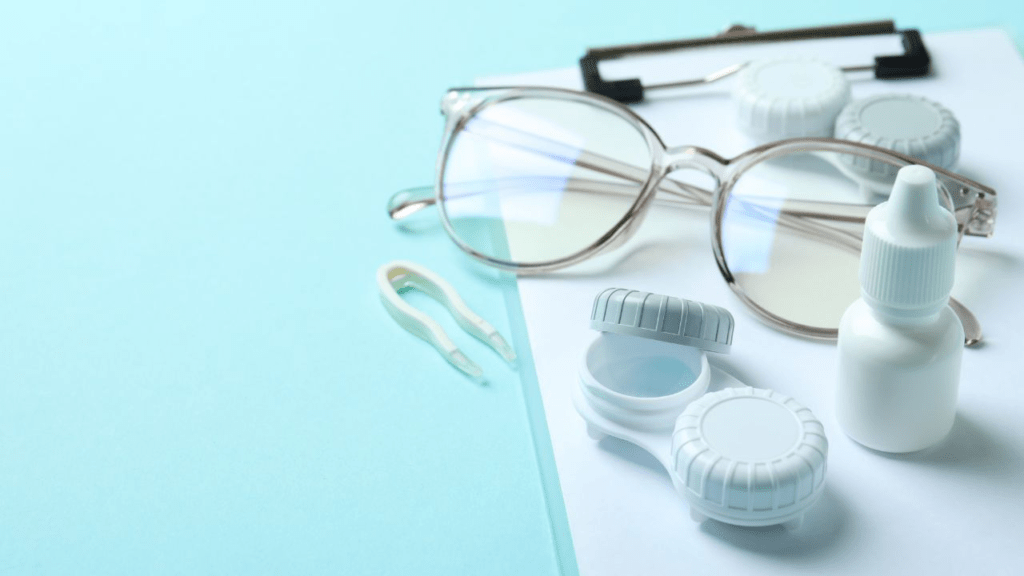
Eyeglasses
Eyeglasses are the most prescribed eye health aid. They work by refocusing the light entering the eye so images can correctly focus on the retina.
However, eyeglasses can fog up, are unstable, and are inconvenient overall, especially for children who enjoy the outdoors and play sports.
For children with high myopia, eyeglasses can make them self-conscious, too, since they require thicker lenses than average.
Multifocal contact lenses
Contact lenses with several focal points slow eye growth, reducing myopia progression.
While contacts are more convenient than glasses, they are applied to the eye, making them more likely to lead to irritation and infections.
Contact lenses also need higher maintenance than eyeglasses. Thus, parents should always consider their child’s readiness and hygiene before getting them.
Learn more about picking the right contact lenses here.
Orthokeratology (Ortho K) or CRT
Ortho K, also known as ‘eye braces,’ is a revolutionary and innovative procedure that allows your child to wake up to clear, brand-new eyes.
The mechanism is simple—your child wears Ortho K lenses at night to train their eyes to take a normal shape and slow down their deterioration, and then takes them out the next morning.
The eyes retain the ideal shape throughout the day, so there’s no need to wear eyeglasses or contact lenses.
We offer this painless, non-invasive, and reversible visual correction aid at Eye Braces Clinic.
Unlike LASIK, LASEK, PRK, and other corneal reshaping surgery, Ortho K lenses are virtually painless and will not put your child at risk for surgical or corneal flap complications.
See if your child is a candidate for the procedure by booking a consultation with our expert orthokeratologist today!
Get Innovative Options for Addressing Progressive Myopia at Eye Braces Clinic

Don’t let myopia limit your child from experiencing the world in its full color. Open up the world to them with our progressive myopia treatment and eye health care services.
Begin with a personalised consultation with our trusted eye doctors today.
We will do our best to prescribe the best myopia treatment for your child’s needs.
